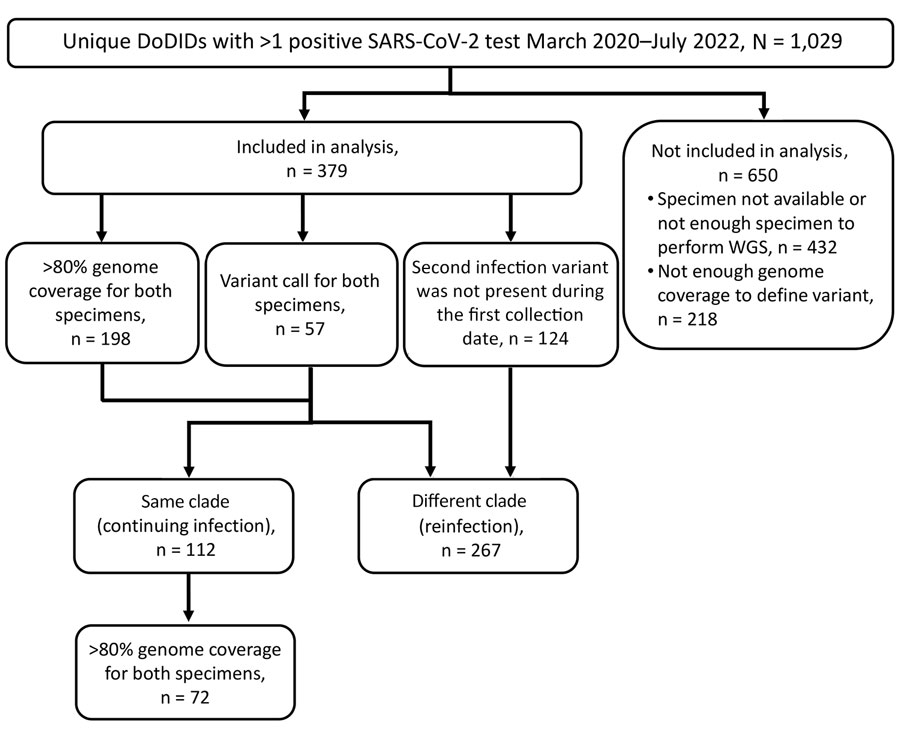Volume 30, Supplement—October 2024
SUPPLEMENT ISSUE
Articles
Using SARS-CoV-2 Sequencing Data to Identify Reinfection Cases in the Global Emerging Infections Surveillance Program, United States
Figure 1

Figure 1. Case selection in study using SARS-CoV-2 sequencing data to identify reinfection cases in Department of Defense Global Respiratory Pathogen Surveillance Program, United States. Flowchart shows case selection criteria used to identify a SARS-CoV-2 reinfection according to whole-genome sequencing. Patient had either a reinfection if the Nextstrain (https://nextstrain.org) clade was different between the first and second specimen collection timepoints or had a continuing infection if the same clade was identified at both timepoints. DoDID, Department of Defense identification number; WGS, whole-genome sequencing.
Page created: October 08, 2024
Page updated: November 11, 2024
Page reviewed: November 11, 2024
The conclusions, findings, and opinions expressed by authors contributing to this journal do not necessarily reflect the official position of the U.S. Department of Health and Human Services, the Public Health Service, the Centers for Disease Control and Prevention, or the authors' affiliated institutions. Use of trade names is for identification only and does not imply endorsement by any of the groups named above.